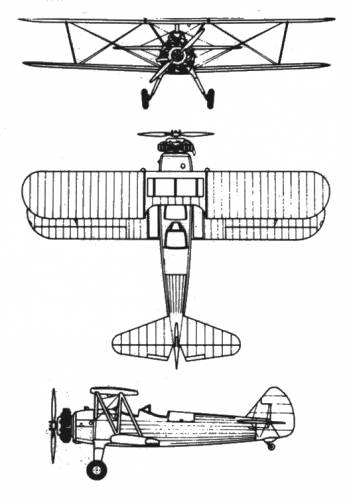Aircraft used as the primary trainer for U.S. Army and U.S. Navy pilots training during the Second World War.
In 1933, Lloyd Stearman designed the forerunner of the Kaydet PT-17, a variation of the PT-13 model, for the civilian market. In 1938, Boeing purchased the Stearman Company and produced Kaydet PT-17 aircraft for pilot training and service during World War II. Overall, over 8,000 PT-17 aircraft were delivered to the United States (US) Army Air Forces during World War II.

Serial Number: 41-25284
Manufacturer: Boeing
Crew: Two (Instructor and student)
Engines: One Continental R-670-5 seven-cylinder radial; 220 horsepower
Wingspan: 32 feet 2 inches
Length: 25 feet 1/4 inch
Height: 9 feet 2 inches
Weight: 1,936 pounds (empty); 2,717 pounds loaded (maximum)
Speed: 106 mph (cruising); 124 mph (maximum)
Range: 505 miles
Service Ceiling: 11,200 feet
Armament: None
Cost: $9,896 (average PT-17 cost of unit as of 1942)
In 1945, Hill Air Force Base received and stored many Stearman trainers due to the end of World War II and the closing of training facilities. In 1943, the PT-17A on display was sold to a private owner and served as a crop duster until the US Air Force Museum Program acquired it in 1980. Two years later, Hill Air Force Base received the aircraft for restoration and it was put on display at Hill Aerospace Museum. When the museum moved to its new buildings in 1991, plans were formulated to hang several aircraft from the ceiling of the new display gallery. In early 1996, the venerable PT-17 was placed in “perpetual flight” when it was suspended in its current position with the other World War II era trainers.
Aircraft used as the primary trainer for U.S. Army and U.S. Navy pilots training during the Second World War.
While an easy-to-fly aircraft, the Stearman was difficult to fly well, allowing trainers to differentiate pilot capabilities.
The primary difference was the PT-17 was fitted with a Continental engine, rather than the Lycoming engine of the PT-13.
A total of 8,584 were built by Stearman Aircraft.